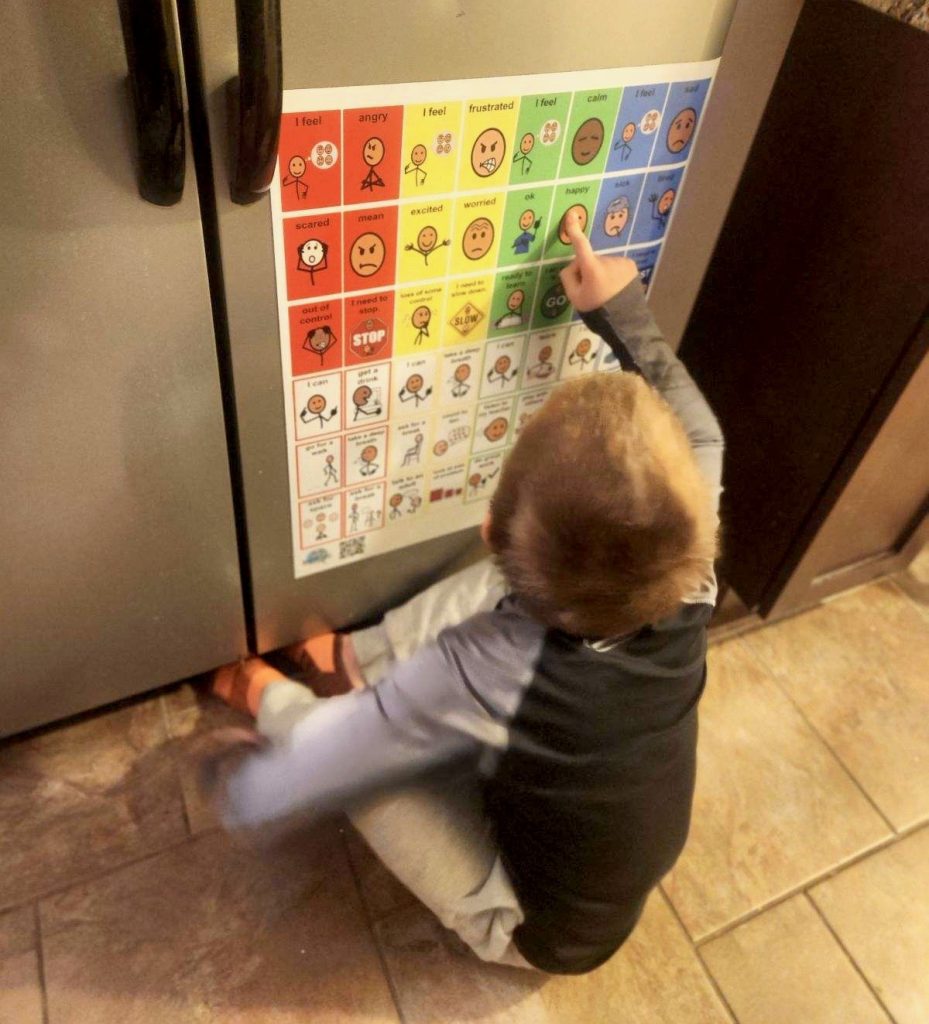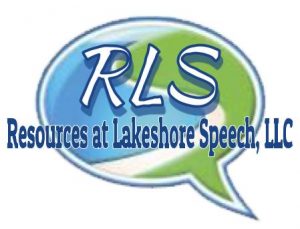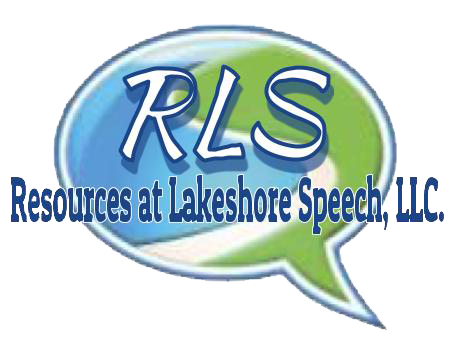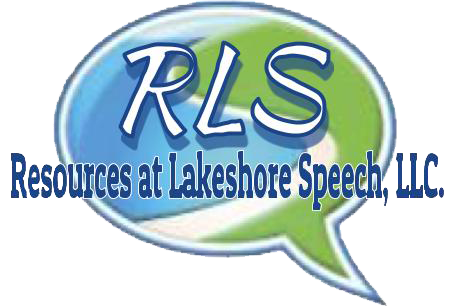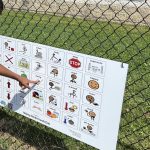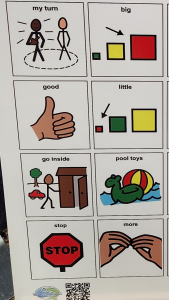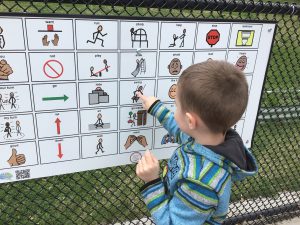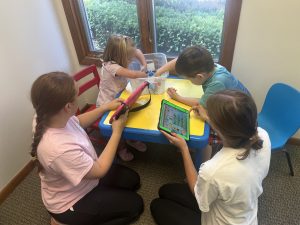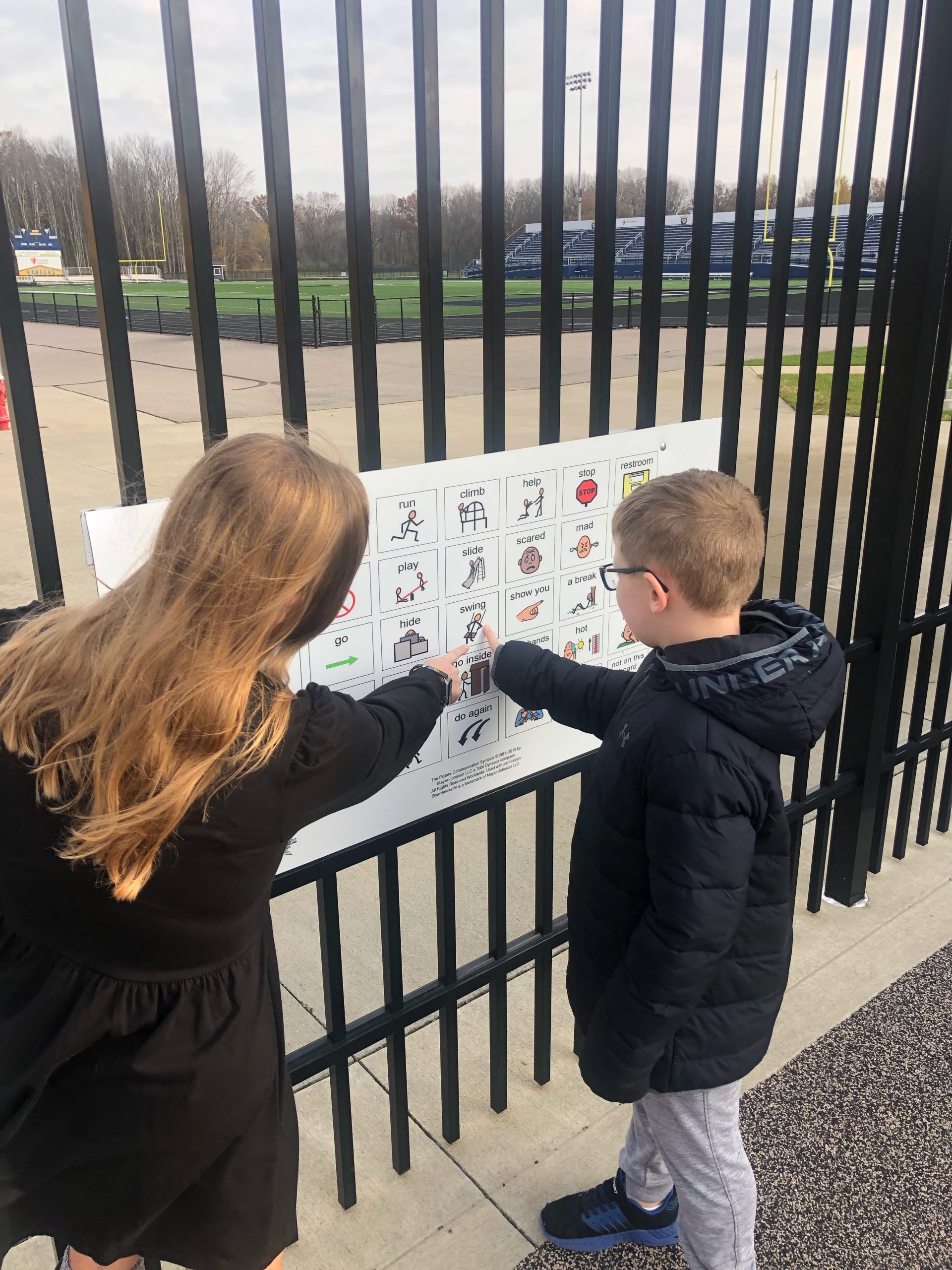
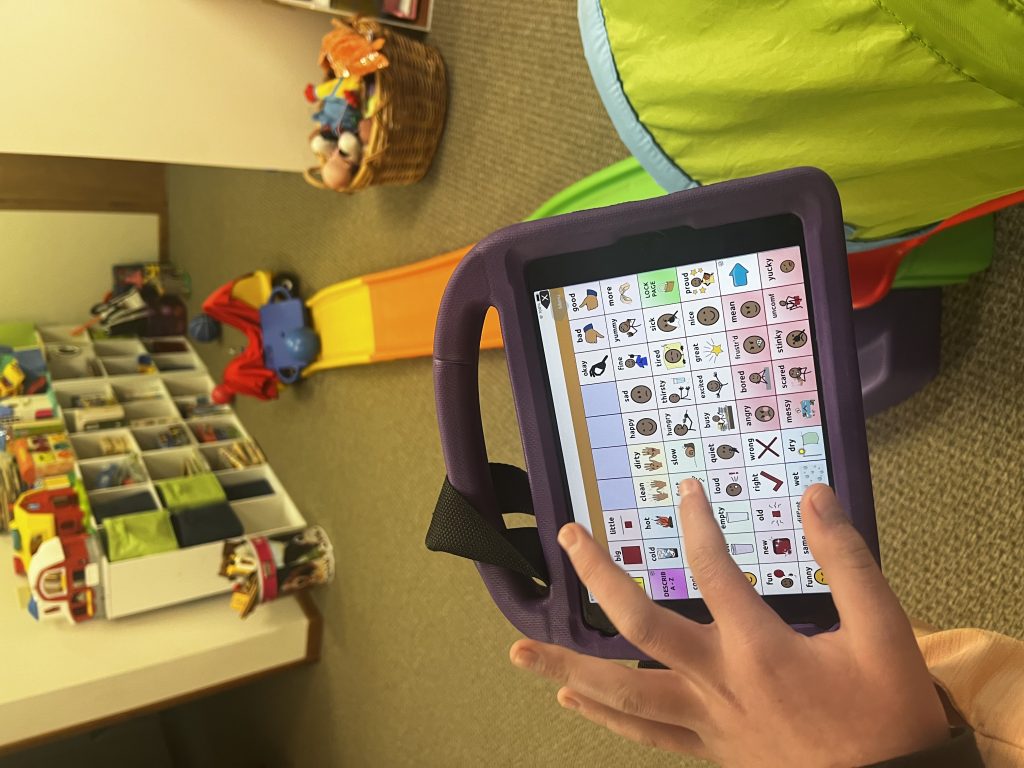
Effective communication is essential for connecting with others, sharing ideas, and building relationships. For individuals using speech-generated devices (SGDs) or communication boards, interaction can be a bit different. These tools are vital for those who have difficulty speaking. Understanding how to communicate with them effectively can make a significant difference. Here’s how you can interact in a supportive and meaningful way.
Understanding Speech-Generated Devices and Communication Boards
- What Are Speech-Generated Devices?
- Speech-generated devices are electronic devices that produce spoken words. They allow individuals to select words or phrases which the device then speaks out loud. These devices can range from simple, single-message devices to complex, multi-message ones.
- What Are Communication Boards?
- Communication boards are non-electronic tools that display symbols, pictures, or words. Users point to or look at these symbols to communicate. Boards can be as simple as a piece of paper or as complex as a laminated sheet with many images.
The Importance of Effective Communication
- Effective communication is crucial for:
- Building Relationships: Communication fosters connections between people.
- Sharing Information: It allows the exchange of ideas, needs, and wants.
- Enhancing Participation: It promotes active involvement in various activities.
- Increasing Independence: It empowers individuals to express themselves and make choices.
Principles of Effective Communication
- Be Patient
- Patience is key when communicating with someone using an SGD or communication board. It may take them longer to form responses. Avoid rushing them. Give them the time they need to express themselves fully.
- Make Eye Contact
- Maintaining eye contact shows that you are engaged and attentive. It helps in building a connection and understanding non-verbal cues.
- Use Clear and Simple Language
- Use straightforward and clear language. Avoid jargon and complex sentences. This makes it easier for the individual to understand and respond.
Steps for Effective Interaction
- Step 1: Start with a Greeting
- Begin with a friendly greeting. A simple “hello” can set a positive tone for the interaction. This helps in making the person feel valued and acknowledged.
- Step 2: Ask Open-Ended Questions
- Open-ended questions encourage more detailed responses. Instead of asking, “Did you have a good day?” ask, “What did you do today?” This invites more engagement.
- Step 3: Wait for a Response
- After asking a question, wait for a response. Give the individual ample time to use their device or board. Show patience and interest in their reply.
- Step 4: Listen Actively
- Active listening involves paying full attention to the speaker. Nod, make eye contact, and provide feedback. This shows that you are genuinely interested in what they have to say.
- Step 5: Repeat or Clarify if Needed
- If you don’t understand, ask them to repeat or clarify. It’s okay to say, “I didn’t catch that. Can you show me again?” This demonstrates your commitment to understanding them.
Creating a Supportive Environment
- Ensure Accessibility
- Make sure the environment is accessible. This includes having the SGD or communication board within easy reach. Ensure the area is well-lit so they can see the symbols clearly.
- Minimize Distractions
- Reduce background noise and other distractions. A quiet environment helps both parties focus on the conversation.
- Position Yourself Appropriately
- Sit or stand at the same level as the individual. This makes it easier for them to see you and feel more comfortable.
Encouraging Communication
- Acknowledge Efforts
- Recognize and praise their efforts to communicate, even if the message isn’t clear. Positive reinforcement encourages them to keep trying.
- Use Visual Aids
- Incorporate visual aids when necessary. Pictures, gestures, and written words can support communication and help convey messages more effectively.
- Be Consistent
- Use consistent language and symbols. Familiarity with specific terms and images aids comprehension and response.
Overcoming Communication Barriers
- Address Technical Issues
- If there’s a problem with the SGD, address it promptly. Ensure the device is charged and functioning correctly.
- Adapt to the Individual’s Needs
- Be flexible and adapt your communication style to suit the individual’s needs. This may involve using more gestures, slowing down your speech, or breaking down information into smaller parts.
- Seek Professional Advice
- Consult with speech therapists or other professionals if you encounter persistent communication challenges. They can provide strategies and support to improve interaction.
Promoting Inclusion and Participation
- Encourage Social Interaction
- Promote opportunities for the individual to interact with others. This can be through group activities, social events, or community involvement.
- Foster Independence
- Encourage the individual to use their device or board independently. Support them in making choices and expressing preferences.
- Advocate for Accessibility
- Advocate for accessible environments in schools, workplaces, and public spaces. This includes ensuring that communication aids are available and integrated.
Personalizing Communication
- Learn About Their Preferences
- Take the time to learn about the individual’s preferences and interests. This makes conversations more engaging and meaningful.
- Use Familiar Topics
- Discuss familiar topics that interest the individual. This encourages participation and makes the communication process more enjoyable.
- Respect Their Pace
- Respect the individual’s pace and don’t rush them. Each person has their own rhythm and comfort level when communicating.
Building Long-Term Communication Skills
- Provide Ongoing Support
- Offer ongoing support and encouragement. Continuous reinforcement helps in building and maintaining communication skills.
- Celebrate Milestones
- Celebrate communication milestones and achievements. Recognizing progress boosts confidence and motivation.
- Engage in Regular Practice
- Encourage regular practice of communication skills. This can be through daily interactions, structured activities, or therapy sessions.
Conclusion
Effective communication with individuals using speech-generated devices or communication boards is a rewarding and enriching experience. It requires patience, understanding, and a commitment to making meaningful connections. By following these guidelines, you can support and empower individuals to express themselves, participate actively in their communities, and build lasting relationships. Remember, communication is a two-way street, and your efforts to engage and connect can make a significant impact on their lives.
